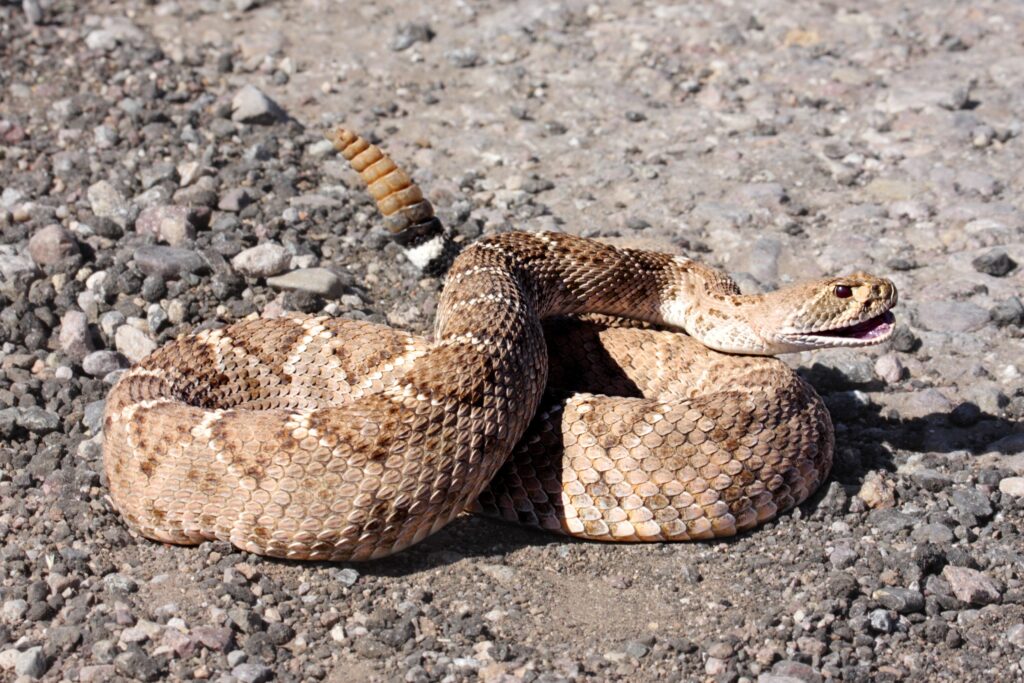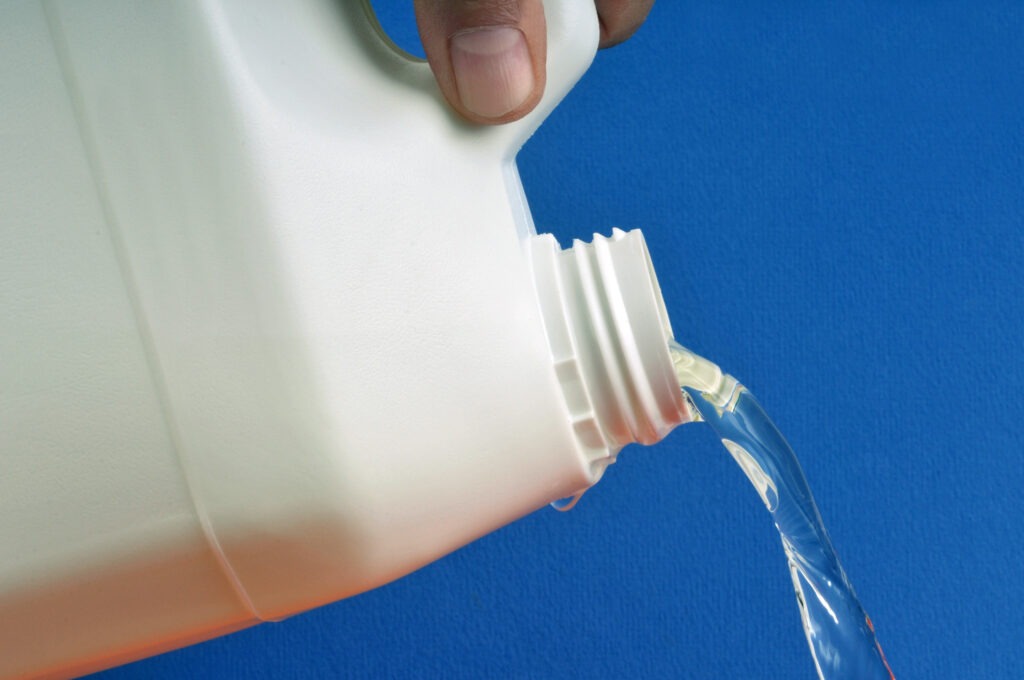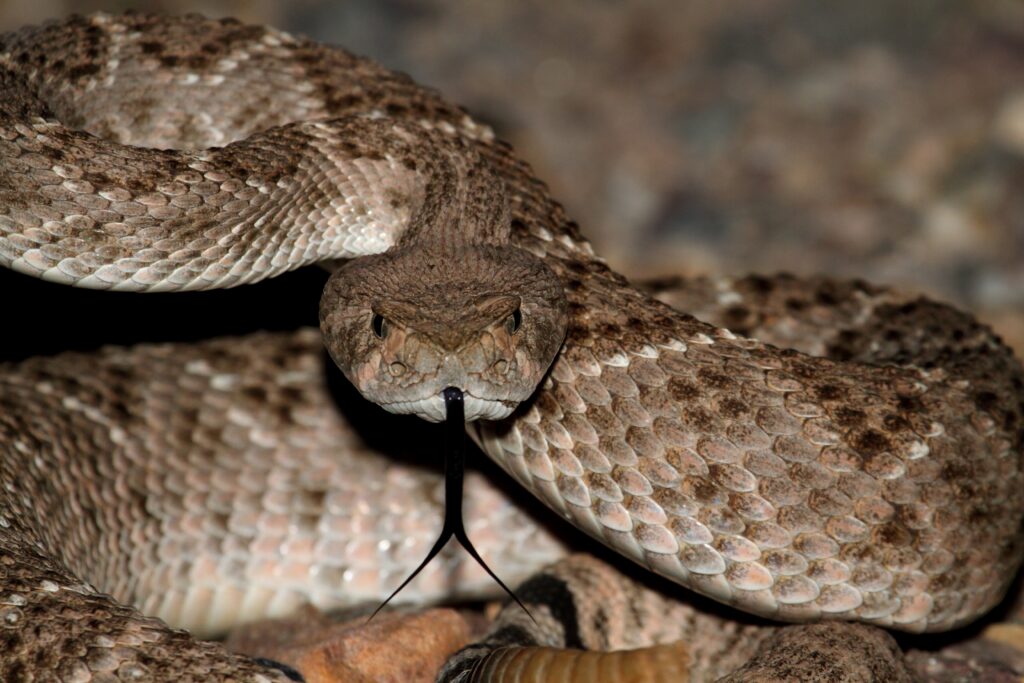
All pests are irritating but rattlesnakes are at the top of the list for most people. But most people want to avoid them in the first place as opposed to having to kill or remove one. So, does vinegar or bleach keep rattlesnakes away?
I’ve tried both and learned:
Both vinegar and bleach may help to keep rattlesnakes away, though vinegar is the better option. Not only are rattlesnakes more opposed to vinegar as a smell, but bleach could potentially harm your plants or pond fish (if you have them).
There are many ways to keep snakes out of your yard, including preventative measures. Don’t worry! You will find a way to get rid of them in this article.
So let’s dive in!
Best Rattlesnake Deterrents

Vinegar and bleach can both be used to keep rattlesnakes away from your home. Bleach is less commonly used because it is a much stronger chemical that could be damaging to plants or other animals.
Vinegar is most often used to keep snakes away from bodies of water.
You can pour vinegar around the perimeter of your swimming pool or pond to deter rattlesnakes, however, you must do so carefully.
If you have fish, using too much vinegar can harm or even kill them, and vinegar can harm or kill plants too. Make sure you know the right amount before using it.
You can also use snake-deterrent plants such as marigolds, wormwood, or lemongrass.
Rattlesnakes are often repelled by strong scents and having these plants in your yard might help keep them away.
You can also use things like cinnamon oil or clove oil. Snakes particularly hate these scents, so sprinkling a little on or around the problem area(s) can act as fantastic and effective deterrents.
Other strong scents such as garlic/onions can be especially repellent to snakes.
Not only do rattlesnakes detest the smell, but the fumes can cause their skin to become itchy as well. If you choose to use garlic and onions, plant them around the perimeter of your yard. Keep in mind that the same smell that snakes dislike has also driven away some people.
Where/When Snakes Appear
Rattlesnakes are naturally equipped with camouflage capabilities. They come in a variety of colors: green, brown, sandy, black, etc. This means that their hiding places also come in a wide range of possibilities.
Especially if you live in a highly snake-populated area, take extra care around the following places.
Bushes. Hiding underneath or behind bushes is a great place for snakes. It provides them with shade and shelter, and they can often be difficult to pick out. Keep your bushes neatly trimmed to avoid having snakes coiled up at the base; that is never a welcome surprise.
They can also be found in patches of weeds or brush that have grown out of control. Most plants are great havens for rattlesnakes, mostly thanks to the shade and coverage they provide.
Tall, long grass can also be a liability, so keep your lawn mowed. If you live on a large property that happens to include fields, there is every chance you will come across a snake or two out there, so exercise caution.
It is also wise to keep rocks or piles of wood to a minimum in your yard.
You should not have piles of debris of any kind as snakes will likely be attracted to the shade and shelter. When you go to remove the wood or rocks, check for snakes first. If you abruptly disturb a rattlesnake’s hiding place, you run the risk of startling them and provoking them to attack you.
They can also hide in places like tool sheds or pool pump houses.
If your tool shed is used frequently, there is probably less of a concern there, but otherwise, you should get it cleaned out. Again, exercise caution when doing so. You do not want to disturb a snake and get bitten.
Moisture is also a major attractant for snakes.
Not only does it attract snakes but it can also attract things they like to eat, such as rats or insects. Puddles, leaky pipes, ventilation ducts, or damaged gutters are all possible hiding places for rattlesnakes. Get these things taken care of as soon as possible.
The slightest difference might help keep snakes out of your yard.
Best Preventative Measures for Rattlesnakes

There are many things you can do to keep snakes out of your yard. Here are a few of the most common:
As mentioned above, it is important to keep careful track of where snakes like to hide and eliminate as many of these places as possible.
Overgrowth of plants, standing water, and piles of debris are all attractive to snakes. Keep these things to a minimum as much as possible and you will be in good shape.
Keeping a snake’s “menu” to a minimum will also help. If you have a previous pest problem (which includes rats, insects, and other small rodents), snakes might find their way to your yard while in search of food.
Getting rid of all vermin will make your property less appealing to rattlesnakes.
Keep your grass cut short. This will likely ensure enough change and activity to discourage snakes, plus you probably won’t have any tall weeds that might offer any potential hiding places. You can also use natural predators as a way to keep rattlesnakes away.
Foxes and raccoons are common predators, as well as many birds of prey or guinea hens and turkeys. Pigs and cats will also help you control the rattlesnake population.
